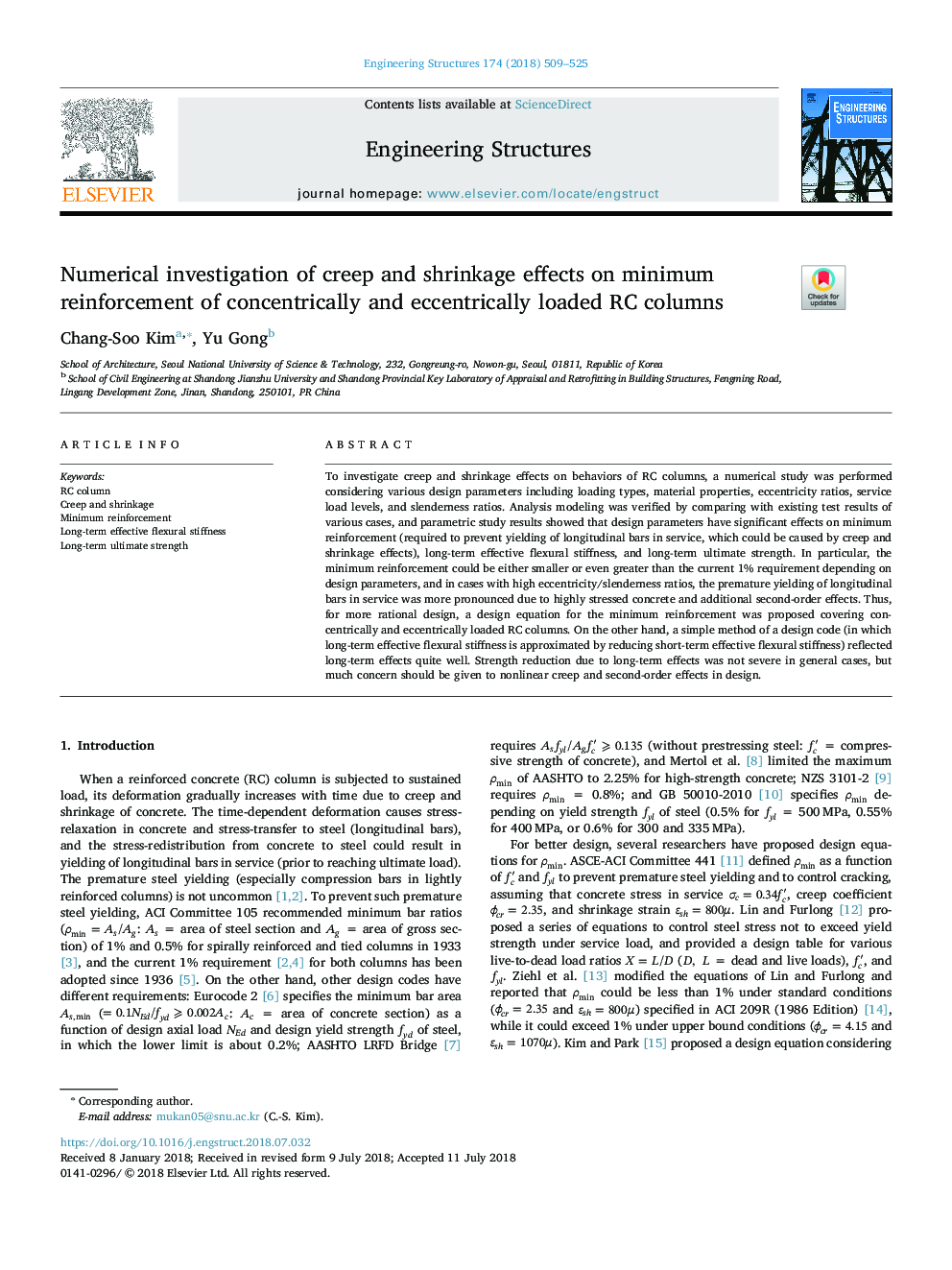| Article ID | Journal | Published Year | Pages | File Type |
|---|---|---|---|---|
| 6735528 | Engineering Structures | 2018 | 17 Pages |
Abstract
To investigate creep and shrinkage effects on behaviors of RC columns, a numerical study was performed considering various design parameters including loading types, material properties, eccentricity ratios, service load levels, and slenderness ratios. Analysis modeling was verified by comparing with existing test results of various cases, and parametric study results showed that design parameters have significant effects on minimum reinforcement (required to prevent yielding of longitudinal bars in service, which could be caused by creep and shrinkage effects), long-term effective flexural stiffness, and long-term ultimate strength. In particular, the minimum reinforcement could be either smaller or even greater than the current 1% requirement depending on design parameters, and in cases with high eccentricity/slenderness ratios, the premature yielding of longitudinal bars in service was more pronounced due to highly stressed concrete and additional second-order effects. Thus, for more rational design, a design equation for the minimum reinforcement was proposed covering concentrically and eccentrically loaded RC columns. On the other hand, a simple method of a design code (in which long-term effective flexural stiffness is approximated by reducing short-term effective flexural stiffness) reflected long-term effects quite well. Strength reduction due to long-term effects was not severe in general cases, but much concern should be given to nonlinear creep and second-order effects in design.
Related Topics
Physical Sciences and Engineering
Earth and Planetary Sciences
Geotechnical Engineering and Engineering Geology
Authors
Chang-Soo Kim, Yu Gong,
